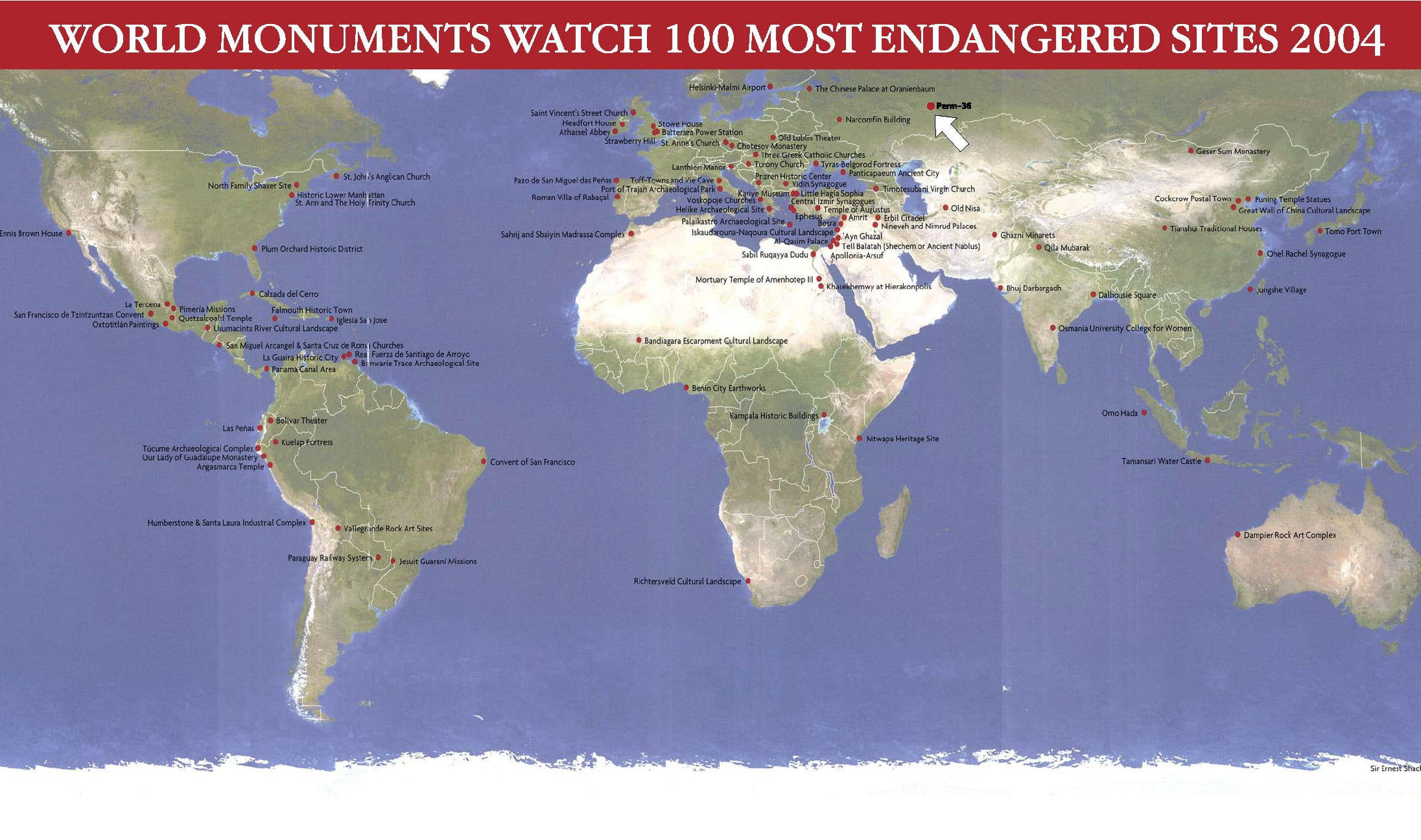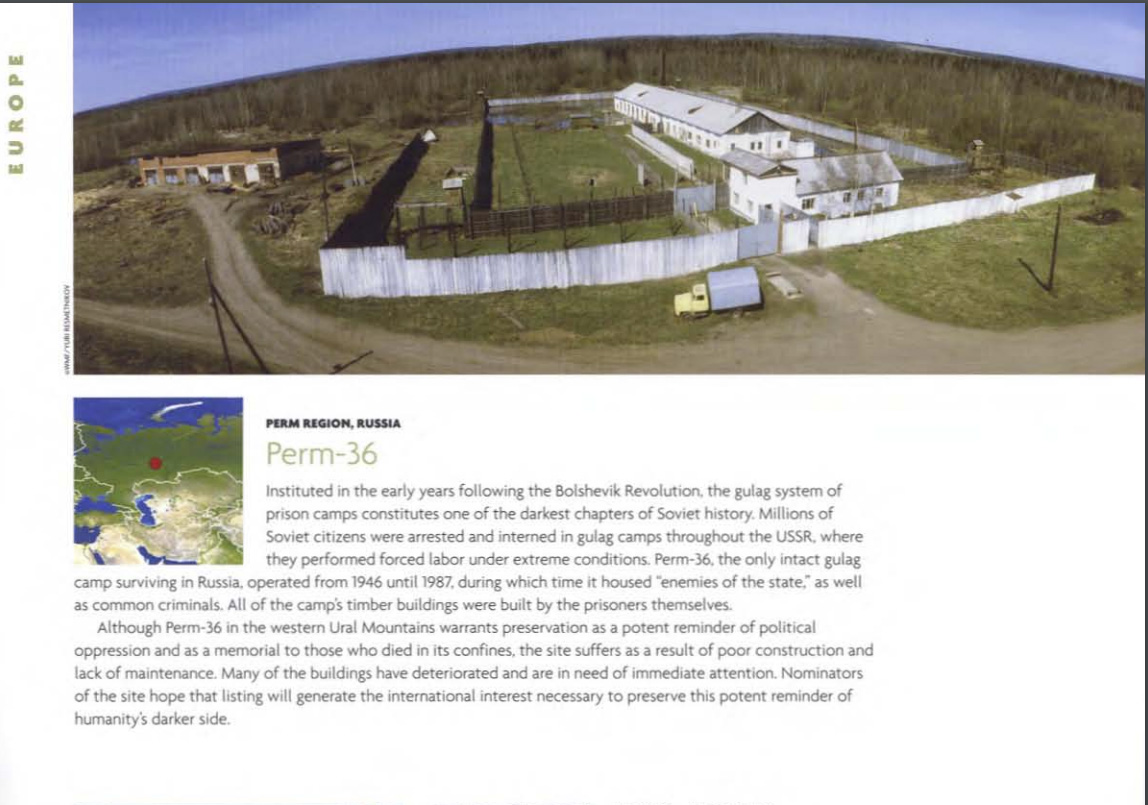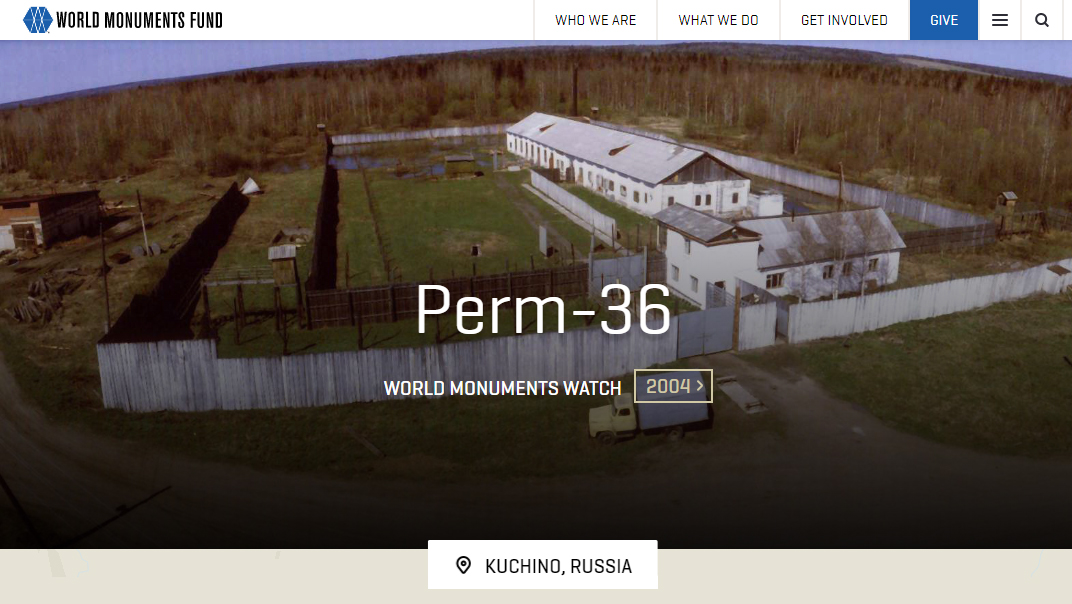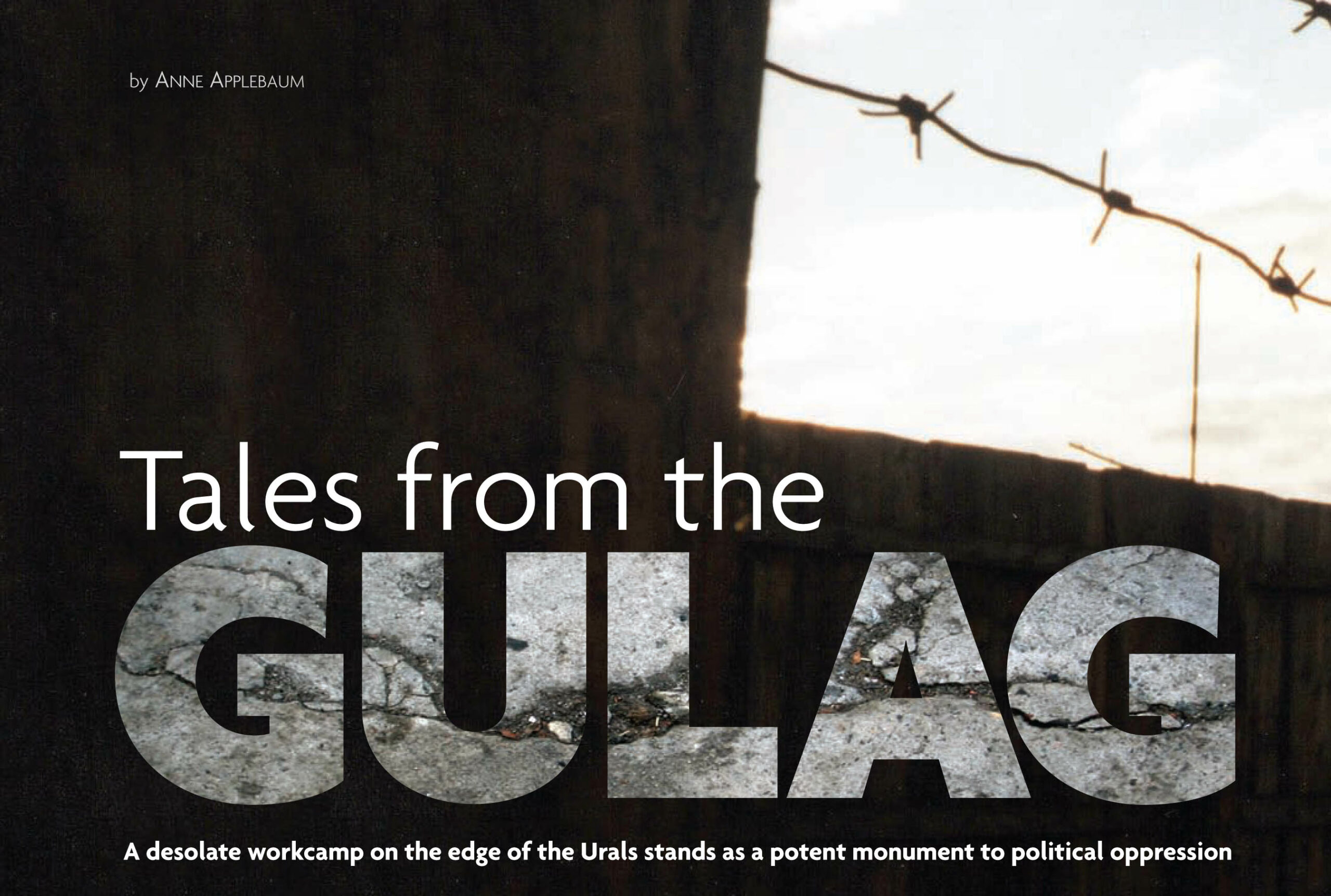Founded in 1996 by the New York-based private nonprofit World Monuments Fund, World Monuments Watch, an independent publication, has been drawing international attention to historical, artistic and architectural heritage threatened by neglect, vandalism, conflict or natural disasters. Every two years, the WMF publishes a list of the 100 most endangered sites worldwide in urgent need of funding and protection.

Unlike the UNESCO World Heritage Committee, which includes monuments in its list exclusively at the proposals of UNESCO Member States, WMW is guided by the assessments of ICOMOS and UNESCO experts, regardless of the opinions of the leadership of the countries in whose territories the monuments are located. The experts themselves form the final list, based on the importance of the monument, the degree of threat and the viability of current measures to protect it.
It was this that in 2002 allowed the leadership of the ANO “Memorial Center for the History of Political Repressions “Perm-36” to propose to the expert council of the World Monuments Fund that the former political camp Perm-36, which was threatened with destruction due to insufficient funding for restoration and restoration work, be included in the List of 100 World Monuments Watch.

And it worked: already in the next issue of WMW in 2004, an article devoted to the Perm-36 camp appeared, and a separate page appeared on the foundation’s website. It explains in detail both the uniqueness of the object and the circumstances that pose a danger to its safety. You can read the Russian translation of the article here.
A year before this event, in the autumn of 2003, in the magazine ICON, the WMF’s own publication, an article by the famous historian and publicist Ann Applebaum was published under the title “Tales from the Gulag“. In it, Ann, winner of the Pulitzer Prize for the book “Gulag: A History”, shares her impressions of a trip to the former political zone Perm-36 with the thoroughness of a journalist and the expressiveness of a writer. She characterizes this camp as the only surviving of the many thousands of camp departments of the Stalinist Gulag and the most cruel camp for political prisoners of the 70s and 80s of the twentieth century.
All this attention received by the Perm-36 camp from the world expert community was not in vain: the government of the Perm Territory increased its share in the financing of restoration work. Funds were allocated from the World Monuments Fund and Ch.S. Motta (Flint, US), which, by the way, is a rare exception: international charitable foundations usually do not have the right to allocate funds for the purpose of investing them in real estate (fixed assets) of beneficiaries; also received an Ambassadorial Grant from the US Congress.
Another result of the publication was that in 2007, WMF experts at a meeting of the ICOMOS Council recommended that they apply to the UNESCO World Heritage Committee with a proposal to include the Perm-36 camp in the World Heritage List. Unfortunately, this process has not yet been completed.



